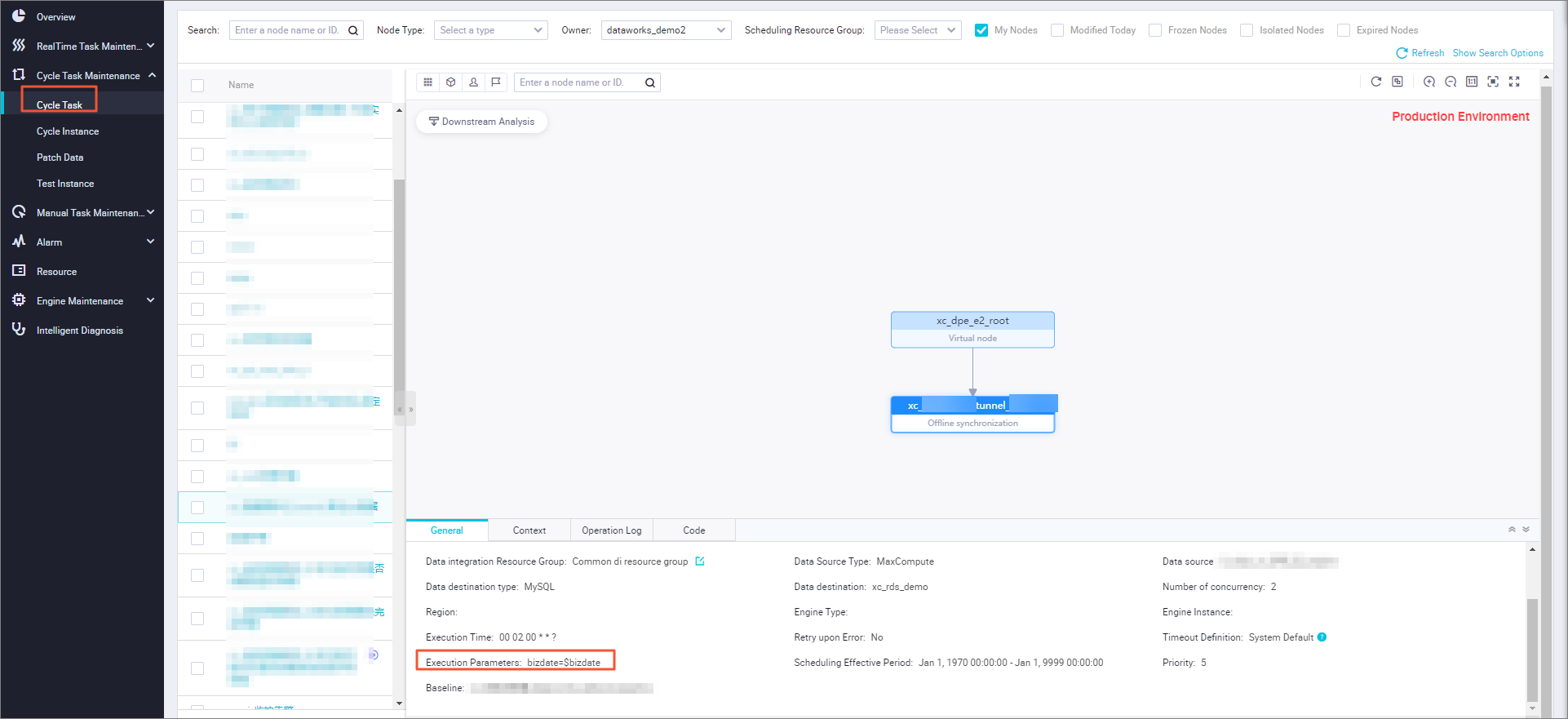This topic provides answers to some frequently asked questions about the nodes that are successfully run but have no data generated.
Scenario 1: An auto triggered node is successfully run and has operational logs
Scenario 2: An auto triggered node is successfully run but has no operational logs
Scenario 1: An auto triggered node is successfully run and has operational logs
If an auto triggered node is successfully run, the code logic of the node is executed as expected. However, when the instances of the auto triggered node attempt to be run as scheduled, the node fails to obtain data of its ancestor nodes or an error is reported, indicating that the partitions of the output table of its ancestor nodes do not exist. You can manually rerun the instances to obtain data of the ancestor nodes.
The auto triggered node does not depend on its ancestor nodes that generates an output table.
The auto triggered node depends on its ancestor nodes that generates an output table. However, the partitions of the output table are not what are expected. This indicates that the cycle of the instances on which the auto triggered node depends is incorrect. On the General tab of the auto triggered node or on the page that appears after you click the auto triggered node and click View Logs, you can view the values of the parameters for the ancestor and descendant nodes of the auto triggered node in a day.

Reconfigure dependencies between nodes.
Check the values of the parameters for the ancestor and descendant nodes of the auto triggered node
Scenario 2: An auto triggered node is successfully run but has no operational logs
View the status of the auto triggered node on the General tab. For more information, see Dry-run instances.